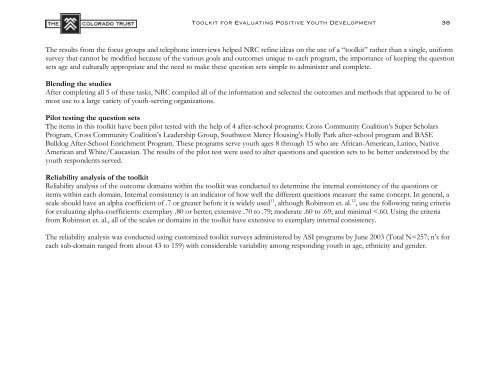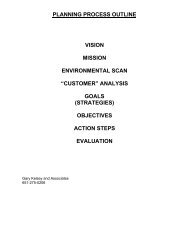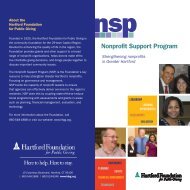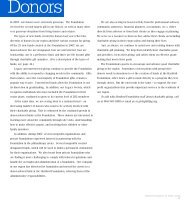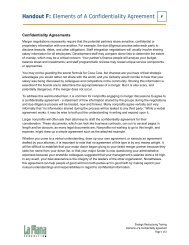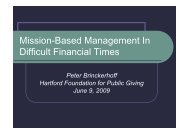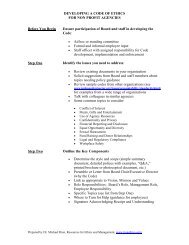Toolkit for Evaluating Positive Youth Development
Toolkit for Evaluating Positive Youth Development
Toolkit for Evaluating Positive Youth Development
You also want an ePaper? Increase the reach of your titles
YUMPU automatically turns print PDFs into web optimized ePapers that Google loves.
<strong>Toolkit</strong> <strong>for</strong> <strong>Evaluating</strong> <strong>Positive</strong> <strong>Youth</strong> <strong>Development</strong> 38The results from the focus groups and telephone interviews helped NRC refine ideas on the use of a “toolkit” rather than a single, uni<strong>for</strong>msurvey that cannot be modified because of the various goals and outcomes unique to each program, the importance of keeping the questionsets age and culturally appropriate and the need to make these question sets simple to administer and complete.Blending the studiesAfter completing all 5 of these tasks, NRC compiled all of the in<strong>for</strong>mation and selected the outcomes and methods that appeared to be ofmost use to a large variety of youth-serving organizations.Pilot testing the question setsThe items in this toolkit have been pilot tested with the help of 4 after-school programs: Cross Community Coalition’s Super ScholarsProgram, Cross Community Coalition’s Leadership Group, Southwest Mercy Housing’s Holly Park after-school program and BASEBulldog After-School Enrichment Program. These programs serve youth ages 8 through 15 who are African-American, Latino, NativeAmerican and White/Caucasian. The results of the pilot test were used to alter questions and question sets to be better understood by theyouth respondents served.Reliability analysis of the toolkitReliability analysis of the outcome domains within the toolkit was conducted to determine the internal consistency of the questions oritems within each domain. Internal consistency is an indicator of how well the different questions measure the same concept. In general, ascale should have an alpha coefficient of .7 or greater be<strong>for</strong>e it is widely used 11 , although Robinson et. al. 12 , use the following rating criteria<strong>for</strong> evaluating alpha-coefficients: exemplary .80 or better; extensive .70 to .79; moderate .60 to .69; and minimal


